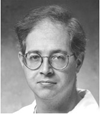December 7, 1941 Pearl
Harbor.... Lots
of casualties. Patient safety routine efforts primarily consist of finger
on the pulse, eyes on the chest, observation of skin color. The recently
released drug, thiopental, is employed. Some of the soldiers die…of
anesthesia (1-3). Anesthesia-related death rate reported at 1 in 450 (2).
September 1979 – September 1981 (WAK residency time). The
operating surgeon calmly notes blood’s dark. WAK’s reaction: BLOOD'S
DARK!!! Dr. Todres says the first 3 things to check for with any
problem in the OR is, first airway, then the airway, and finally the
airway. So he checks it and finds a disconnect which somehow was not able
to be heard with the esophageal stethoscope over the orthopedists’ hammers and
drills. No oxygen analyzer, no disconnect alarm, no pulse oximeter, no
automated blood pressure monitor; by today’s standards, no nothing, although we
did have manual blood pressure cuffs, EKG machines, and the beginnings of
advanced hemodynamic monitoring. WAK’s attendings were fond of saying
“when I was a resident…” followed by some parable of how he managed with no
monitors other than his five senses. It seemed like at least once a
year at M&M there was discussion about an intraoperative death by
undetected disconnect. Anesthesia death rate said to be about 1 in 10,000.
2007. Cyanosis is virtually never seen by trainees and
death by disconnect is now unheard of. Gas analyzers, pulse
oximetry, end-tidal CO2, easily balanced pressure monitors, idiot
proof machines and more are part of the modern anesthesia tool
box. Anesthesia death rate in healthy patients thought to be about one in
200,000 (4,5). Remarkable progress.
The Anesthesia Patient Safety Foundation was formed
September 30, 1985, by Ellison Pierce with the help of many others. The
efforts of the APSF (http://www.apsf.org/) have produced this remarkable
transformation in the patient care environment which arose initially in
the operating room, and now is spreading to general medical/surgical/pediatric
floors, emergency departments, and intensive care units. The
accomplishments of the specialty of anesthesiology in advancing patient safety
have been so successful that it has been emulated by other medical specialties
and the patient safety movement has morphed into a multidisciplinary national
safety patient foundation (http://www.npsf.org/) which will undoubtedly address
many of the patient safety issues that are now recognized as widespread outside
of operating rooms. Indeed, the notion of patient safety started by these
visionaries has now infected the culture of medicine and it is now the buzz
word of quality improvement programs everywhere. However, there is still a
remaining problem with health care practitioners following the “watch one, do
one, teach one” mantra from the Flexner era and before, leading current
visionaries to conceive and promulgate simulation as an educational tool to
advance patient safety.
Simulation: Simulation: a situation or environment
created to allow persons to experience a representation of a real event for the
purpose of practice, learning, evaluation, testing, or to gain understanding of
systems or human actions. –definition taught at the Center for Medical
Simulation…
1967. Red Cross first aid classes teach a fairly
recently described new CPR method, having discarded the chest pressure-arm lift
method, the primary resuscitation method of the 50s and 60s and perhaps
before. So what did we practice our CPR on? Resusci-
Above excerpted from my intro
(before the copy editors got their hands on it) to the just published
New
Vistas in Patient Safety and Simulation, An Issue of Anesthesiology Clinics
1.
2.
3. Bennetts FE: Thiopentone anaesthesia at
4. Eichhorn
JH: Prevention of intraoperative anesthesia accidents and related severe
injury through safety monitoring. Anesthesiology 1989; 70:572-7.
5. Lagasse RS: Anesthesia safety: Model or Myth? Anesthesiology 2002; 97:1609-1617.
 Mitch Keamy is an anesthesiologist in Las Vegas Nevada
Mitch Keamy is an anesthesiologist in Las Vegas Nevada
 Andy Kofke is a Professor of Neuro-anesthesiology and Critical Care at the University of Pennslvania
Andy Kofke is a Professor of Neuro-anesthesiology and Critical Care at the University of Pennslvania
 Mike O'Connor is Professor of Anesthesiology and Critical Care at the University of Chicago
Mike O'Connor is Professor of Anesthesiology and Critical Care at the University of Chicago
 Rob Dean is a cardiac anesthesiologist in Grand Rapids Michigan, with extensive experience in O.R. administration.
Rob Dean is a cardiac anesthesiologist in Grand Rapids Michigan, with extensive experience in O.R. administration.
Nice post. I am old enough to have heard the comment "blood's dark" a few times in training. Glad I never have to say it myself. Thanks to you guys at the head of the table.
Posted by: rlbates | September 13, 2024 at 05:45 AM
so given this contractors compulsion to comment on an article ina series of articles which include one emphasizing application of pareto economics to a successful clandestine way to decrease quality one can only assume that this contractor is fully aboard with the concept leading one to wonder about the materials that are hidden behind the walls of whatever it is that they are building. thus their houses may appear safe but judging the manner in which they choose to do shotgun posts on unrelated blogs one also has to wonder how much attention is given to the quality of their work.
Posted by: kofke | June 12, 2024 at 05:09 AM